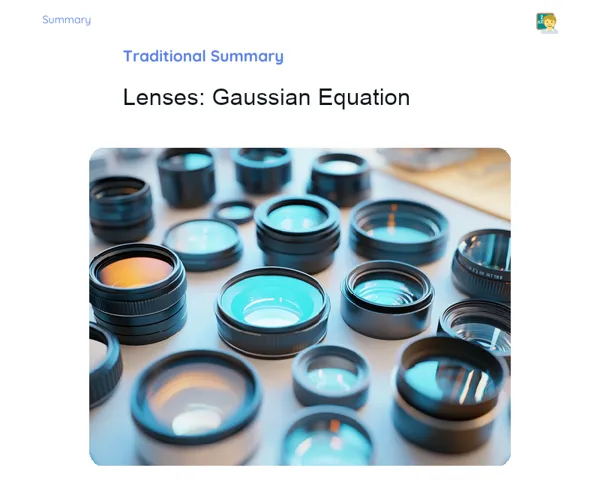Socioemotional Summary Conclusion
Goals
1. Understand that sound intensity measures the energy carried by a sound wave per unit time through a unit area.
2. Calculate sound intensity using relevant formulas.
3. Develop socio-emotional skills by recognising and regulating emotions throughout the learning process.
Contextualization
Did you know that sound intensity can significantly alter our emotional state? Think of the last time you found yourself in a bustling market or, alternatively, in a serene garden. Loud sounds can create stress and unease, while softer sounds tend to promote relaxation and overall well-being. By grasping how sound intensity operates, you're not only mastering a crucial concept in physics but also learning how to leverage this knowledge to enhance your quality of life! 🎶🔊
Exercising Your Knowledge
Sound Intensity
Sound intensity quantifies the energy that a sound wave carries over time through a unit area perpendicular to the path of the wave. This indicates that a more intense sound wave carries greater energy. Understanding this is essential for comprehending how sound affects various environments and, by extension, our emotions.
-
Unit of Measurement: Watts per square meter (W/m²), indicating the sound energy per unit area.
-
Relevance: Loud sounds can harm hearing and mental wellness, while soft sounds can be soothing.
-
Applicability: Used in fields such as sound engineering, healthcare (audiology), and even in managing school environments to boost student well-being.
Sound Intensity Formula
The sound intensity formula is I = P/A, where I represents sound intensity, P denotes the sound wave's power in watts, and A is the area over which the wave propagates in square meters. Mastering this formula allows the calculation of sound intensity from various sources and settings, which is immensely useful in noise analysis and management.
-
Power (P): Indicates the energy emitted by the sound source in watts.
-
Area (A): The surface area through which the sound wave disperses.
-
Practical Calculation: Helps determine how loud or soft the sound intensity is in various situations, aiding in creating a conducive environment.
Decibels (dB)
Decibels represent a logarithmic unit of measurement for sound intensity. The formula to convert sound intensity to decibels is L = 10 * log10(I/I0), where I0 is the reference intensity. The decibel scale is crucial for intuitively understanding the variations in sound intensity we encounter daily.
-
Logarithmic Scale: Simplifies comparing vastly different sound intensities.
-
Reference (I0): Typically set at 1 pW/m² (10^-12 W/m²), representing the lowest sound intensity detectable by the human ear.
-
Practical Use: Employed to gauge sound levels across various scenarios, from industrial sites to classrooms, allowing for better noise management.
Key Terms
-
Sound Intensity: Measure of the energy carried by a sound wave per unit of time through a unit area.
-
Power (P): Energy released by a sound source, measured in watts.
-
Area (A): The surface area over which sound disperses, measured in square meters.
-
Decibels (dB): Logarithmic unit for expressing sound intensity.
-
RULER: A method involving five emotional skills: Recognize, Understand, Name, Express, and Regulate.
For Reflection
-
How do you feel in environments with varying sound intensities? Reflect on how your emotional state shifts with the level of surrounding noise.
-
Recall a moment when a loud sound caused you stress. How could you have managed your emotions in that instance?
-
How can you employ your understanding of sound intensity to enhance your quality of life and that of those around you?
Important Conclusions
-
Sound intensity plays a key role in quantifying the energy a sound wave carries over time and area.
-
Understanding and calculating sound intensity not only enrich our comprehension of our acoustic environment but also help us manage our emotions in various sound contexts.
-
The decibel scale is an effective tool for representing fluctuations in sound intensity, making it easier to grasp noise variations in daily life.
Impacts on Society
In our everyday lives, sound intensity directly influences our well-being and quality of life. For example, noisy settings, like bustling streets or schools during lunch breaks, can elevate stress levels and hinder our ability to focus. Conversely, quiet places, such as libraries and parks, generally encourage peace and concentration, contributing to a more balanced emotional state.
Additionally, understanding sound intensity has practical implications, spanning from preventing hearing damage in workplace environments to designing healthier community spaces. Being aware of how different noise levels affect our emotions helps enhance not only our individual well-being but also fosters the creation of more harmonious and inviting community environments.
Dealing with Emotions
To manage your emotions while studying sound intensity, consider this exercise: Take a calm moment at home to reflect on how varying sound levels influenced your feelings during your measurements. Using the RULER method, start by RECOGNIZING your feelings in noisy versus quiet spaces. UNDERSTAND the possible triggers and outcomes of these emotions. NAME your emotions accurately, such as stress, calmness, anxiety, or relaxation. Next, EXPRESS these emotions appropriately by journaling or discussing them with someone. Finally, REGULATE your emotions by adopting strategies, like wearing headphones with soothing music in noisy environments, to enhance your overall well-being.
Study Tips
-
Utilise sound measurement apps on your smartphone to practice identifying and calculating sound intensity in the different places you often visit.
-
Set up a study space that has an appropriate noise level for your needs; observe how sound intensity affects your concentration and make adjustments accordingly.
-
Explore theoretical concepts through additional resources, such as educational videos and scientific articles, that elaborate on the physics of sound and its practical applications across various fields.



